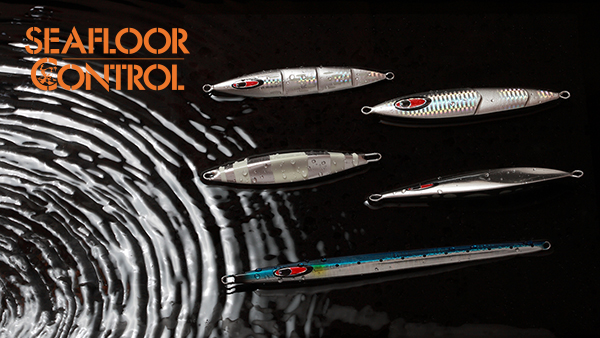What jig weight is best for 50m to 80m of water?
There’s no absolute answer to what jig works. The bottom line is, you never know until you drop a jig and fish makes a bite.
Before slow pitch jigging, they used to say that you use jig weight like this: 80g jig for 80m of water, 120g for 120m. Now we don’t believe that anymore. We sometimes use 300g jig in 100m of water and also in 70m of water. Last year my friend caught a 20kg cod with a 300g Gawky at 70m of water. Of course he didn’t need 300g to reach the 70m bottom. But he chose a 300g because it matches with his tactics and balances with his tackle in the water condition at the time.
The balance of the jig and the rod works in coordination with the water influence. The water influence depends on your boat drift, the depth, the current, and your line. It is so important that you build up a sense to evaluate how heavy the water is at the time. Based on your evaluation, you try to find the balance of the rod and the jig weight. If you find a good balance, you can make a nice rhythm in action. But it’s also true that, if you have a good action skill, you can find a good rhythm in whatever balance of the rod and the jig weight, too. Then after more practice, you will be able to find the balance tactically to make the action rhythm you want to play.
>> What rod to use with how heavy a jig?
The jig can work as long as it can touch the bottom. But in slow pitch jigging, you need a little more jig weight than that. Because SPJ uses small actions and you want to keep your line straight. Especially when you are free-drifting, you want even more jig weight.
50m to 80m is actually a good depth range to explore, when you are free-drifting. If it’s shallower, the bottom is too close and the fish doesn’t want to move vertically. Vertical game doesn’t work well. If it’s deeper, a lot of time free-drifting drifts too fast from the jig and you can’t really control the jig.
If you are free-drifting, the jig weight will probably be about 150g to 250g, with Power 4 rod.
If you are controlling the drift, the jig weight will probably be about 120g to 220g with Power 3, 4 or 5, depending on your tactics. If you are getting your first rod, get Power 4.
Try different jigs, different settings, different places, until you hit a successful pattern. And today’s successful pattern can be useless tomorrow. That’s the game.
The slow-pitch jigging gives you the framework which you can build up your game in.
There’s no mighty jig that works every time. There’s no principle that gives you one right answer. Trust your senses. Give your thinking. Be flexible. Look at a thing in different ways. These are the things the game is challenging you to do more.
Enjoy!
Hope the information helps you! Good luck!
Related Posts
2 Comments
Leave a Reply Cancel reply
Categories
- 1. SPJ (57)
- 1-1. Principles (9)
- 1-2. Techniques (11)
- 1-3. Setup (17)
- 1-4. FAQ (19)
- 1-5. Tackles (3)
- 1-6. Video Gallery (2)
- 2. Other Offshore Games (5)
- 3. Fishing Report (105)
- 3-1. Totos (25)
- 3-2. Readers (72)
- 4. Fish Cooking (19)
- 4-1. Iki-Jime (3)
- 4-2. The Art of Sashimi (5)
- 4-3. Recipe (7)
- 4-4. Seasoning (3)
- 5. Fishing Charter (6)
- Fish (12)






Hi do u have pictures or videos on how to rig up your jigs ?
Hi Mahdi. Thank you for stopping by.
There’s some video to show Sato Sensei and my friend angler. He’s the best jigger around here.
http://anglers-secrets.com/v2020/slowpitch_variations/
I recently bought a GoPro camera. I’m going to shoot my demonstration and post up the videos this month. Stay tuned!